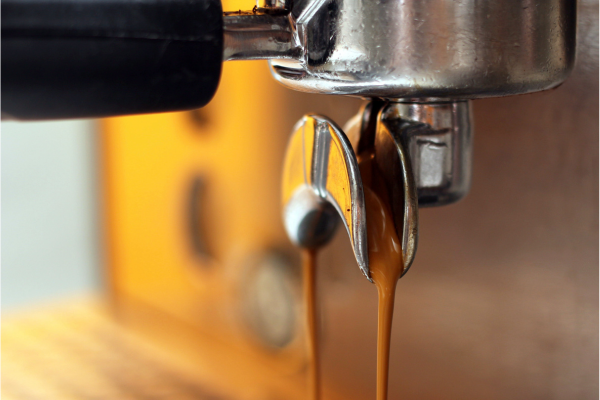The world of coffee brewing offers a fascinating duality. On one side, there’s the effortless precision of automated brewing. On the other, the engaging ritual of manual mastery.
Choosing between these approaches goes beyond personal preference. It fundamentally depends on your lifestyle.
Each method promises a great cup of coffee. However, they deliver it in distinctly different ways. Understanding their core differences is key.
This article will explore the nuances of automated versus manual brewing. It will help you decide which coffee maker best suits your daily routine and coffee aspirations.
The Appeal of Automated Coffee Brewing
Automated coffee makers offer unparalleled convenience. They streamline the brewing process significantly. Often, it’s as simple as pressing a single button. This makes them ideal for busy mornings.
These machines handle most of the variables for you. They heat the water. They distribute it over the grounds. They often even keep the coffee warm. This consistency requires minimal user input.
Automatic Drip Coffee Makers
These are perhaps the most common home coffee machines. You add water and ground coffee. Then, you press a button. The machine brews a full pot automatically.
Pros:
- Ease of Use: Simple operation for daily use.
- Batch Brewing: Great for making coffee for multiple people.
- Programmable: Many models allow you to set a brew time. You can wake up to freshly brewed coffee.
- Consistency: The machine performs the same process every time. This leads to reliable results.
- Lower Cost: Generally more affordable upfront than high-end manual setups.
Cons:
- Less Control: You have minimal control over brewing variables. This includes water temperature or flow rate.
- Plastic Taste: Cheaper models can impart a plastic taste. This happens if components aren’t high quality.
- Water Temperature: Some models struggle to reach ideal brewing temperatures. This impacts flavor extraction.
- Flavor Clarity: The use of paper filters can absorb some coffee oils. This results in a cleaner but potentially less full-bodied cup.
Super-Automatic Espresso Machines
These machines represent the pinnacle of automation. They can grind beans, tamp them, and pull espresso shots. Many even froth milk automatically. All with the push of a button.
Pros:
- Ultimate Convenience: Cafe-quality drinks with minimal effort.
- Speed: Quick preparation, often within minutes.
- Variety: Many offer a range of pre-programmed drinks. This includes lattes and cappuccinos.
- Built-in Grinder: Integrates the grinding process directly into the machine. This adds to the ease of use.
Cons:
- High Cost: Significant initial investment compared to other machines.
- Less Control: Limited ability to fine-tune espresso parameters. This affects true customization.
- Maintenance: More complex internal components require thorough cleaning. Descaling is frequently needed.
- Grind Quality: Built-in grinders may not match the consistency of dedicated burr grinders.
The Art of Manual Coffee Brewing
Manual brewing is about engagement. It’s a hands-on experience. It allows for complete control over every brewing variable. This leads to highly customized and nuanced cups.
It’s a ritual for many enthusiasts. The process itself is as enjoyable as the resulting coffee. It deepens your connection to the beverage. It also fosters a sense of craftsmanship.
Pour-Over Methods (Hario V60, Chemex, Kalita Wave)
These methods involve manually pouring hot water over coffee grounds. Water drips through a filter into a carafe. They highlight the clarity and delicate notes of coffee.
Pros:
- Exceptional Flavor Clarity: Paper filters remove oils and sediments. This creates a clean, bright cup.
- Full Control: You manage water temperature, flow rate, and pour pattern. This allows for precise extraction.
- Highlight Bean Qualities: Ideal for showcasing nuanced, high-quality single-origin beans.
- Ritualistic: The brewing process is engaging and meditative. It becomes a mindful part of your day.
- Aesthetics: Many pour-over brewers are beautiful design pieces. They enhance your kitchen space.
Cons:
- Learning Curve: Requires practice to master the technique. Consistency takes time and effort.
- Time-Consuming: The brewing process itself is slower. It demands your active attention.
- Additional Gear: Often requires a gooseneck kettle and a precise scale. This adds to initial costs.
- Single-Serve Focus: Most pour-overs are designed for one or two cups. They are less ideal for large batches.
Immersion Methods (French Press, Aeropress)
These brewers immerse coffee grounds directly in water. The grounds steep for a set period. They produce a full-bodied cup with a rich mouthfeel.
French Press: Pros:
- Rich, Full-Bodied Flavor: Allows all coffee oils and sediments to pass through.
- Simplicity: Easy to use once you understand the basic process.
- Affordable: Often one of the most budget-friendly brewing options.
- Batch Size: Can brew larger quantities compared to single-serve pour-overs.
Cons:
- Sediment: Produces a “muddy” cup due to fine particles escaping the mesh filter.
- Grind Consistency: Requires a coarse, consistent grind to avoid excessive bitterness.
- Cleanup: Can be messier than other methods, with grounds needing careful disposal.
- Flavor Over-Extraction: If steeped too long, coffee can become very bitter.
Aeropress: Pros:
- Versatile: Can brew espresso-style concentrates, full-bodied coffee, and cold brew.
- Clean Cup: Uses a paper filter, resulting in minimal sediment.
- Speed: Brews very quickly, often in under a minute.
- Portable and Durable: Ideal for travel or outdoor use.
- Forgiving: More consistent results even with minor technique variations.
Cons:
- Small Batch: Typically brews only one or two servings at a time.
- Requires Manual Pressure: Needs some physical effort to press the plunger.
- Disposable Filters: Relies on small paper filters, which are an ongoing cost.
Manual Espresso Machines (Lever Machines, Flair Espresso)
These are for the most dedicated espresso enthusiasts. They provide complete control over the shot. You manually apply pressure to extract the espresso.
Pros:
- Unrivaled Control: Allows for true customization of pressure profiling. This creates unique espresso shots.
- Exceptional Quality: Can produce incredibly nuanced and flavorful espresso.
- Durability: Often built with robust, long-lasting materials and fewer complex parts.
- Rewarding Experience: The learning curve is steep, but mastering it is very satisfying.
Cons:
- Steep Learning Curve: Requires significant practice and skill to pull consistent shots.
- Time-Consuming: Each shot takes time and attention to detail.
- High Initial Cost (for some models): High-end lever machines can be expensive.
- No Automation: Requires manual grinding, tamping, and pressure application.
Lifestyle Considerations: Matching Your Maker to Your Day
Choosing between automated and manual brewing depends heavily on your daily habits. Think about how coffee fits into your life.
Time and Routine
If your mornings are fast-paced and hectic, automation is likely your friend. A programmable drip maker ensures coffee is ready when you wake up. A super-automatic espresso machine delivers a quick latte. These save precious minutes.
If you have more leisure time, manual brewing can be a delightful ritual. The process becomes part of your morning enjoyment. It allows for mindfulness and connection with your coffee.
Control and Customization
Are you a control freak when it comes to flavor? Do you love experimenting? Manual brewing offers endless opportunities for fine-tuning. You can adjust grind size, water temperature, and brewing time. This level of customization is unmatched.
If you prefer consistency without fuss, automation is better. You get a reliable cup every day. You don’t need to worry about variables. The machine handles the details for you.
Budget and Investment
Initial cost can vary widely for both types. Manual brewers like French presses are very affordable. High-end manual espresso machines can be pricey. Automated drip makers are generally mid-range. Super-automatic espresso machines are often the most expensive.
Consider the total cost of ownership. This includes filters, cleaning supplies, and energy consumption. Manual methods might have ongoing filter costs. Automated machines might have higher maintenance needs.
Space and Aesthetics
Some coffee makers take up considerable counter space. Super-automatic espresso machines can be quite large. Drip coffee makers vary in size. Manual brewers like Aeropress or pour-over cones are often compact.
Consider the design that appeals to you. Manual brewers often have a minimalist, artisanal aesthetic. Automated machines can range from sleek modern to industrial. Choose one that fits your kitchen’s style.
Cleaning and Maintenance
Automated machines, especially those with many features, can be more complex to clean. They require regular descaling. Internal components can accumulate residues. Neglecting maintenance impacts flavor and machine longevity.
Manual brewers are often simpler to clean. Many just require rinsing and occasional scrubbing. However, they might require more frequent, hands-on cleaning after each use. Consider your willingness to clean.
Hybrid Approaches: Blending Automation and Manual Control
Many coffee lovers don’t stick to just one method. They combine elements of both automated and manual brewing. This creates a personalized coffee experience.
- High-Quality Grinder with an Automatic Drip: Use a precise burr grinder for fresh grounds. Then, brew with a certified automatic drip maker. This elevates your daily convenience brew.
- Espresso Machine with Manual Frothing: Some semi-automatic espresso machines offer manual steam wands. You get the convenience of automated espresso extraction. You also get the control of manually frothed milk. This allows for latte art.
- Aeropress for Daily, Pour-Over for Weekends: Use the quick and consistent Aeropress for weekdays. Reserve the more contemplative pour-over for leisurely weekend mornings. This offers versatility.
The key is to find what works best for you. Don’t feel limited to just one path. Experiment and enjoy the journey of coffee exploration.
Considerations Finals
The choice between automated brewing and manual mastery is deeply personal. It’s a reflection of your lifestyle, your values, and your coffee aspirations.
Automated machines offer unmatched convenience and consistency, perfect for fast-paced living.
Manual brewers provide unparalleled control, a rewarding ritual, and the opportunity to craft truly exceptional, customized cups.
Whether you prioritize speed and simplicity, or craftsmanship and profound flavor exploration, the right coffee maker is out there.
Take stock of your daily routine, your budget, and your passion for coffee. By making an informed decision, you’ll ensure that every cup perfectly fits your lifestyle, transforming your home into your ideal coffee sanctuary.

